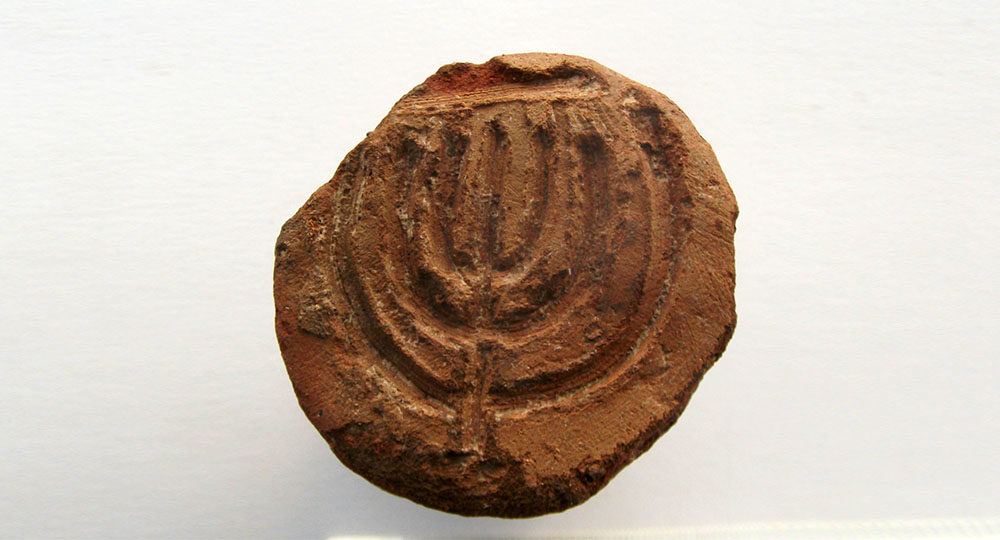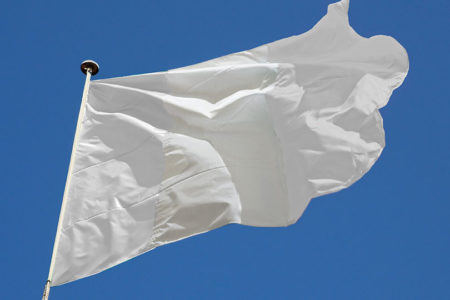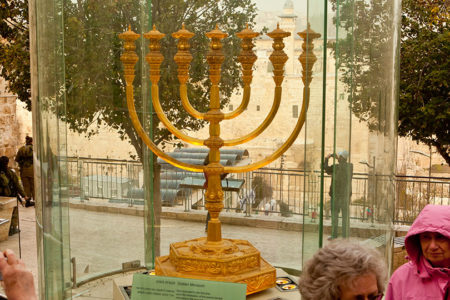Amazing Archaeological Discoveries Affirm Jewish Claim to Land
A 2,000-year-old, second-Temple-era clay seal the size of a coin and a 1,500-year-old stamp, discovered within weeks of each other, have thrilled the Israeli archaeological world and further prove Israel’s historical Jewish claim to Jerusalem.
The cartouche—or seal—never before seen by the public, is the size of the modern New Israeli Shekel coin and bears the Aramaic inscriptions “it is pure” and a two-letter abbreviation for the name of God.
It was discovered near the Robinson’s Arch at the southwestern corner of the Temple Mount. Archaeologists say the soil layer above the Herodian road where the seal was found dates to the first century B.C.
Two weeks after the seal was displayed to the public, archaeologists continued to dig up breathtaking proofs of the ancient and never-severed connection between the Jewish people and the land of Israel. They found a tiny 1,500-year-old stamp near the city of Akko, bearing the image of the seven-branched Temple menorah. The stamp was used to identify baked products and probably belonged to a bakery that supplied kosher bread to the Jewish people of Akko in the Byzantine period (sixth century).
The Seal
Archaeologist Eli Shukron of the Israel Antiquities Authority and Professor Ronny Reich of Haifa University, who oversaw the excavation of the seal, explained, “This is the first time an object of this kind has been found. It is direct archaeological evidence of Jewish activity on the Temple Mount during the second Temple era,” they said. “Products being brought to the Temple had to be stamped pure—which is what this seal was used for.”
Such seals are mentioned in the Mishnah and discussed in the Talmud, but the cartouche does not match any of the four inscriptions included in extant texts. “What we know is brought down from the surviving literature,” the archaeologists said. “Here archaeology has brought us something new.”
In addition to the seal, other artifacts were discovered dating to the second Temple period, and some to the days of the Hasmoneans—such as oil lamps, clay cooking pots, a jug containing oils and perfumes, and coins from such Hasmonean kings as Alexander Jannaeus and John Hyrcanus.
The Hasmoneans, descendants of the Maccabees of Hanukkah fame, ruled Judea from 140 B.C. to 116 B.C.
The Stamp
This find belongs to a group of stamps referred to as “bread stamps” because they were usually used to stamp baked goods.
According to Gilad Jaffe and Dr. Danny Syon, directors of the excavation on behalf of the Israel Antiquities Authority, “A number of stamps bearing an image of a menorah are known from different collections. The Temple menorah, being a Jewish symbol par excellence, indicates the stamps belonged to Jews, unlike Christian bread stamps with the cross pattern, which were much more common in the Byzantine period.”
There were no Muslims in the region at the time because the Qur’an had not yet been written.
According to Syon,
This is the first time such a stamp is discovered in a controlled archaeological excavation, thus making it possible to determine its provenance and date of manufacture. The stamp is important because it proves that a Jewish community existed in the settlement of Uza in the Christian-Byzantine period. The presence of a Jewish settlement so close to Akko—a region that was definitely Christian at this time—constitutes an innovation in archaeological research.
The excavators added, “Due to the geographical proximity of Horbat Uza to Akko, we can speculate that the settlement supplied kosher baked goods to the Jews of Akko in the Byzantine period.”
The stamp is engraved with a seven-branched menorah atop a narrow base, and the top of the branches forms a horizontal line. A number of Greek letters are engraved around a circle and dot on the end of the handle. Dr. Leah Di Segni of the Hebrew University of Jerusalem suggested they probably spell out the name Launtius, which was common among Jews of the period and also appears on another Jewish bread stamp of unknown provenance. According to Dr. Syon and Gilad Jaffe, “This is probably the name of the baker from Horbat Uza.”
Horbat Uza is a small rural settlement where clues were previously found that allude to it being a Jewish settlement. These include a clay coffin, a Shabbat lamp, and jars with menorah patterns painted on them.
Dr. David Amit of the Israel Antiquities Authority, who has made a study of bread stamps, added, “A potter engraved the menorah image in the surface of the stamp prior to firing it in a kiln, whereas the owner’s name was engraved in the stamp’s handle after firing. Hence we can assume that a series of stamps bearing the menorah symbol were produced for Jewish bakers, and each of these bakers carved his name on the handle, which also served as a stamp.
“In this way the dough could be stamped twice before baking: once with the menorah—the general symbol of the Jewish identity of Jewish bakeries—and again with the private name of the baker in each of these bakeries, which also guaranteed the bakery’s kashrut [fitness under Jewish dietary laws].”
by Arutz-7 (IsraelNationalNews.com)







